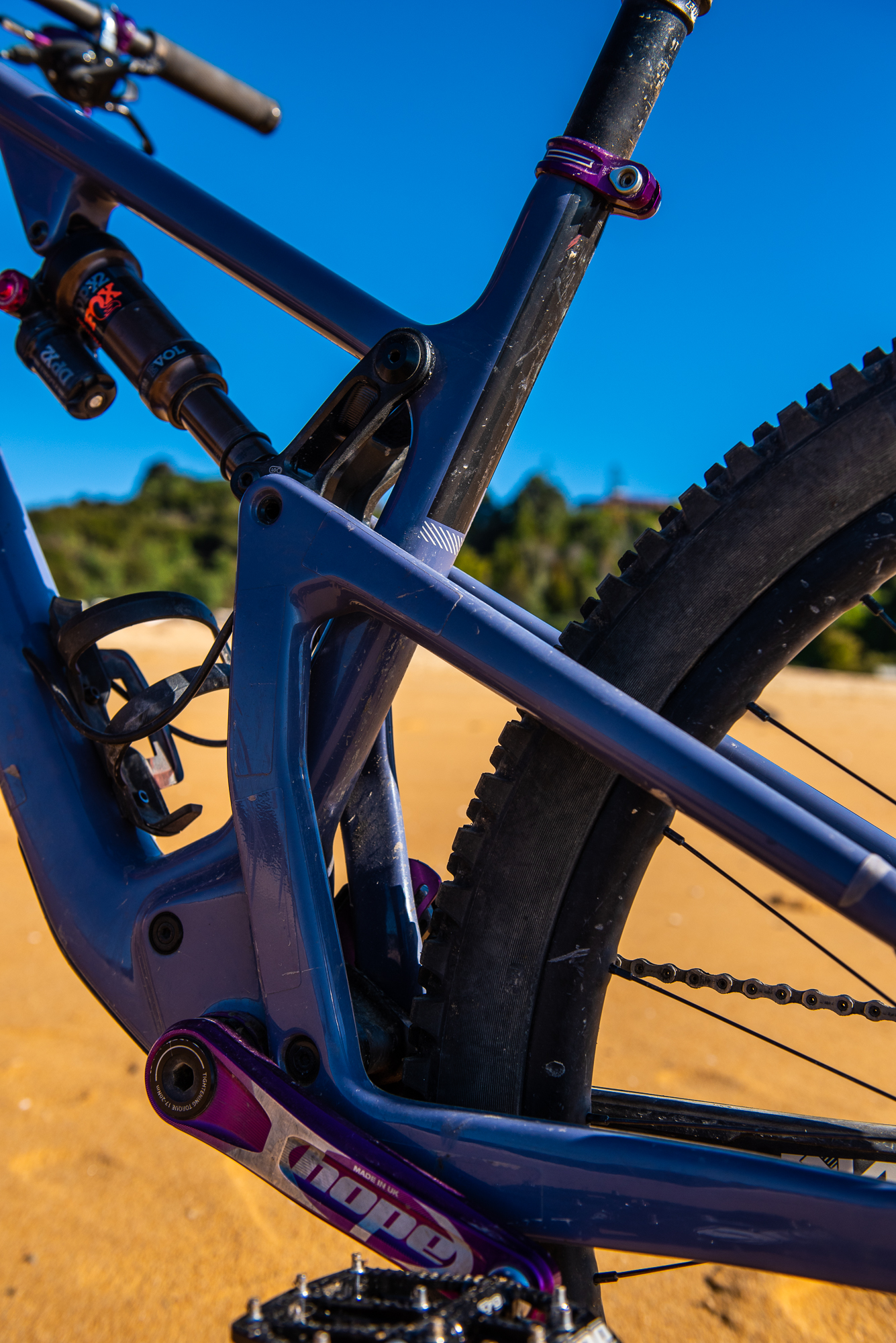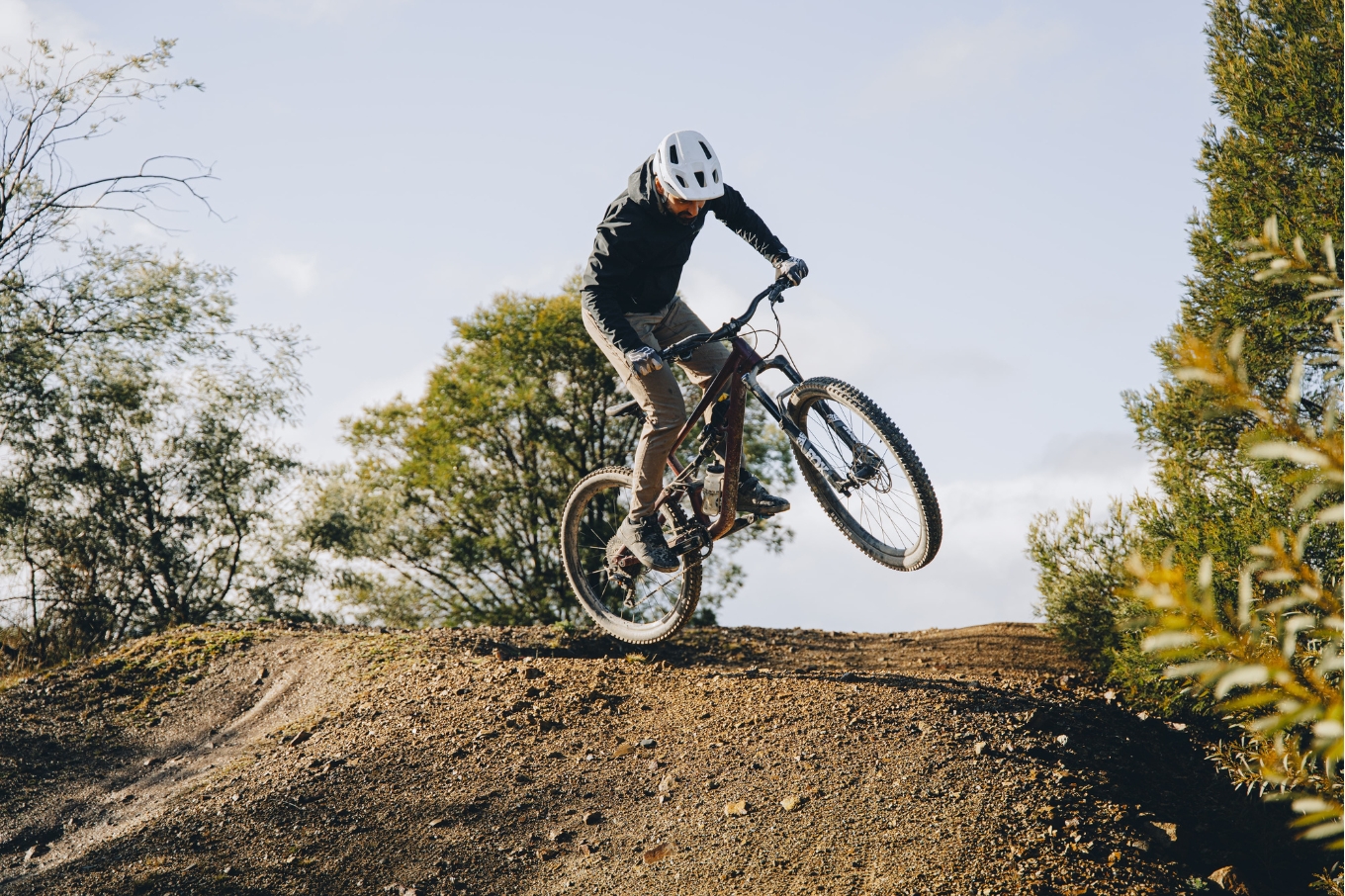Tested: Santa Cruz 5010 CC Frame set
Pick one - versatile, playful or durable. What about all three in one? The Santa Cruz 5010 CC looks to tick all these boxes!
Words: Adam Macbeth Images: Digby Shaw
Even before the rise of Danny MacAskill and his ability to make it look like the most fun bike ever, the Santa Cruz 5010 had a reputation for playfulness, versatility and durability. However, in an industry increasingly focussed on bikes with 140mm travel or more, the 130mm 5010 has the ability to get lost in the mix and overlooked as not being capable enough for hard trail riding. With a week of the steep, rough trails of Nelson, New Zealand ahead of me, I was excited to see what the little brother in Santa Cruz’s 27.5 range was capable of.

As I was riding the personal bike of seasoned Enduro professional Jamie Nicholl, with a wildly non-standard (but totally awesome) spec, this review will focus on frame related ride quality traits, which is what you can build up if you source a frame kit.
First Look
Having only received minimal updates since 2014, 2018 saw some noticeable updates that on paper see the 5010 move to the pointy end of the modern trail bike geometry yard stick. Retaining the ability to adjust geometry via a flip chip in the lower shock mount, the high position sees the seat angle steepened to 75.2 degrees with a slacker 66.5 head angle and a 15mm longer reach across all frame sizes. Flipping to the lower setting removes just .3 of a degree and both these options speak immediately of all round capability.

Build quality, as one has come to expect from Santa Cruz, is top notch and the move to fully internally routed cable gives the new 5010 a much cleaner look than its predecessor. The most noticeable change is the complete removal of allowances for a front derailleur, and the changes to the swingarm that have been made possible as a result. The swingarm now features bracing from the bottom bracket area to the shock link on both sides. This not only looks much nicer than the previous generations of this bike, but ought to be a lot stiffer and track better through rough terrain and limit stresses on suspension hardware as a result.

Santa Cruz have stuck to their guns across the bulk of their range with traditional, threaded bottom brackets. While pressfit frame systems are no doubt cheaper to manufacture, the threaded system still allows for easier home serviceability and durability in adverse conditions. Something that Santa Cruz have held as a core value for many years. The 5010 is among the first generation of Santa Cruz to move toward drop-in style headsets. As with threaded bottom brackets, this allows for much easier serviceability, removing the need for pressing and removal tools to work on your own bike.

When purchased as a frame only, or in the full-gas XX1 Eagle spec, the 5010cc comes with the Fox DPX2 Factory air shock. If you’re an avid follower of Enduro World Series you’ll no doubt have seen 5010 owners competing with coil shocks fitted to their bikes. While Santa Cruz say this is totally fine, they do believe that the tuneability and progression of air shocks are a much better match for the 5010.

With all those details and their associated assumption in mind, I was eager to hit the trails. Nelson is renowned for the steep, rooty nature of its trails and I was curious to see how the 5010 would stack up.
On The Trail
Having spent the majority of the last couple of years riding twenty nine inch wheeled bikes, the 5010 certainly took some getting used to. This was as much due to the nature of Nelson’s trails as it was wheel size though. Being used to riding Sydney’s relatively flat trails where rocks replace roots, the difference in handling was immediately noticeable. However, once I got my eye in for the rapid changes in altitude and loose, off camber trails the 5010 really came into it’s own.

It’s funny that in 2019 a 66.5 degree headangle is not considered that slack on a trail bike. For the most part the front end of the 5010 felt balanced and forgiving with an enormous sense of control and predictability. This was no doubt enhanced by the very stiff front end. There were a few times, on extremely steep and long chutes littered with roots, that I definitely felt like the 5010 could have done with being a degree slacker although this would likely take away slightly from it’s overall versatility.

All 5010 iterations from Santa Cruz are fitted with a 130mm Fox 34 fork of some kind. The Factory version fitted to my test bike was a perfect complement to the overall ride of the frame. Handling was super sharp, front end weight was much lighter than I was used to having spent a lot of time on twenty niners recently and a good aesthetic match to the overall vibe of the 5010. I did find, in the above mentioned steep, rough conditions, that the 34 felt a little undergunned and perhaps didn’t allow me to really build confidence and stay off the brakes as much as I may have on a slightly burlier fork. I can definitely see a 5010 being an amazing ride with a something like a Fox 36 up front.

Santa Cruz have used the Virtual Pivot Point suspension system for almost twenty years since the release of the Blur and V10 models in 2002. VPP has always had a reputation for it’s descending prowess and this is certainly the case with the 5010. Small bump sensitivity across chatter (yep, like roots) is incredible with traction being maintained regardless of how choppy things got.

Getting deeper into travel, the 5010 proved to be much more capable than its 130mm stated travel would suggest. Riding trails blind as I was, I made a lot of mistakes (a LOT) and pushed the 5010 through some extremely poorly chosen lines resulting in having to deal with ugly, square edged obstacles that one should otherwise be avoiding. Avoidance though, if you had time, was probably the easiest of any bike I’ve ridden, the 5010 responding immediately to small weight shifts and immediately leaving the ground when asked thanks to the low weight and super short 425mm chainstays.

Traditionally VPP suspension has been quite reliant on good shock technology to bring out desirable climbing traits. Across the range however, all modern Santa Cruz feature a revised VPP system that sees the main pivot located above and forward of the bottom bracket and this has changed ascending behaviour considerably. These revised suspension kinematics combined with the steep seat angle and long reach of the 5010 made for a seriously capable climber allowing you to really get in a comfortable groove even on the longest and steepest of Nelson’s climbs.

Verdict
Two-Seven-Five is certainly not dead. The Santa Cruz 5010 is agile, capable and efficient in ways many of us may have forgotten about through spending times on bigger wheels or deeper travel. With complete carbon bikes starting at $7249 it should certainly be on your radar if you’re looking at your first move into a boutique brand and the ride quality that, in this case, certainly comes with a small range and attention to ride quality detail.
Frame: Santa Cruz 5010cc, 130mm
RRP: $5249 frame only
From: lustyindustries.com
Size Tested: Large
Shock: Fox DPX2 Factory
Tester Bio: Adam Macbeth
Riding experience: From trials to backcountry adventures and the retail coal face Adam has a lifetime of experience on two wheels.
Generally Rides: Salsa Mukluk
Height: 178cm
Weight: 76kg
Bike Test Track: New Zealand’s finest homemade trails







